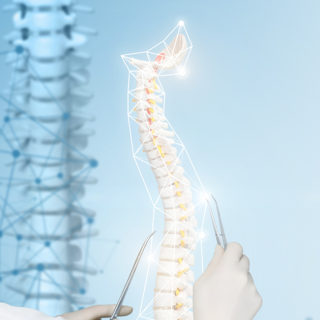Dr. Claudia Angeli is a respected Doctor of Kinesiology originally from Buenos Aires, Argentina. She has dedicated her career to helping spinal cord injury (SCI) patients regain their ability to walk, and currently conducts research at a prominent university in the United States.
Her research is focused on understanding human locomotion following neurologic injury, and one of her more important published papers examines how spinal cord “excitability” enables voluntary movement in humans with complete paralysis.
Today, that means examining the breakthrough procedure called Epidural Stimulation. This is the treatment Dr. Angeli has been working on in her quest to give the gift of mobility to the 6,000 Americans diagnosed every year with motor-complete SCI.
In December, 2018, she graced the stage of the TEDxIndianapolis Women’s conference to announce how she and her colleagues were faring on a proof of principle study combining Epidural Stimulation with locomotor training. The study was focused on treating patients with no movement below their injury level.
Those of us in the spine-injury research community were excited that an organization as esteemed as TED would provide a platform for scientists to spread their ideas about Epidural Stimulation. And what’s even more exciting about Dr. Angeli’s presentation are the results she reported.
Her TED talk was of course scientific in nature, but it had a feel good tone to it with the audience shown footage of an experiment that was downright inspiring. Audio was included, and you could hear a voice calling out “Left toe up, left toe down. Left leg up, left leg down,” in a cadence that signaled success.
It meant that the patient’s Epidural Stimulation implant was effectively bridging the gap between brain signals above the injury level and spinal-cord tissue below the injury level, allowing them to generate movement in their extremities.
This was certainly a promising result for Dr. Angeli and her team, and indeed the entire field of spinal cord treatment is experiencing more and more promising results, with Unique Access Medical (UAM) at the forefront.
UAM was the first organization to make it possible for SCI patients to receive Epidural Stimulation implants and locomotor training outside of a clinical research environment. Our two facilities located in India and Thailand are the most experienced hospitals providing the surgery commercially, and the results have exceeded even the optimism with which Dr. Angeli spoke at TED.
Like her trials, UAM’s surgeons implant an electrode array in patients’ lumbar spinal cords where the circuitry for walking and standing is located.
And also like her trials, UAM’s patients receive the surgery, have their devices reprogrammed routinely for maximum effectiveness and minimum discomfort, and participate in robust physical therapy that retrains their standing and stepping actions.
With nearly 60 successful Epidural Stimulation implant surgeries under our belt — including two for Canadian C6 SCI patient, Dr. Richi Gill — we’ve seen results ranging from encouraging to positively inspiring. For a true taste of the latter, watch the short testimonial video of 22-year old American C7 SCI patient, Derrick Wruble.
UAM and researchers around the world like Dr. Angeli have taken on an extremely difficult challenge; we all want to eliminate the need for doctors to ever have to tell an SCI sufferer, “You’ll never walk again.”
So we’re validated by the successes Dr. Angeli and her colleagues are having, and share in her sentiments: “We found the key to unlocking the spinal cord’s intrinsic capacity for re-learning. It is time to advance this knowledge and remove ‘NEVER’ from our vocabulary.”
Contact us today to learn more about the results we are seeing from Epidural Stimulation, or to speak with a patient representative and arrange a free consultation.













